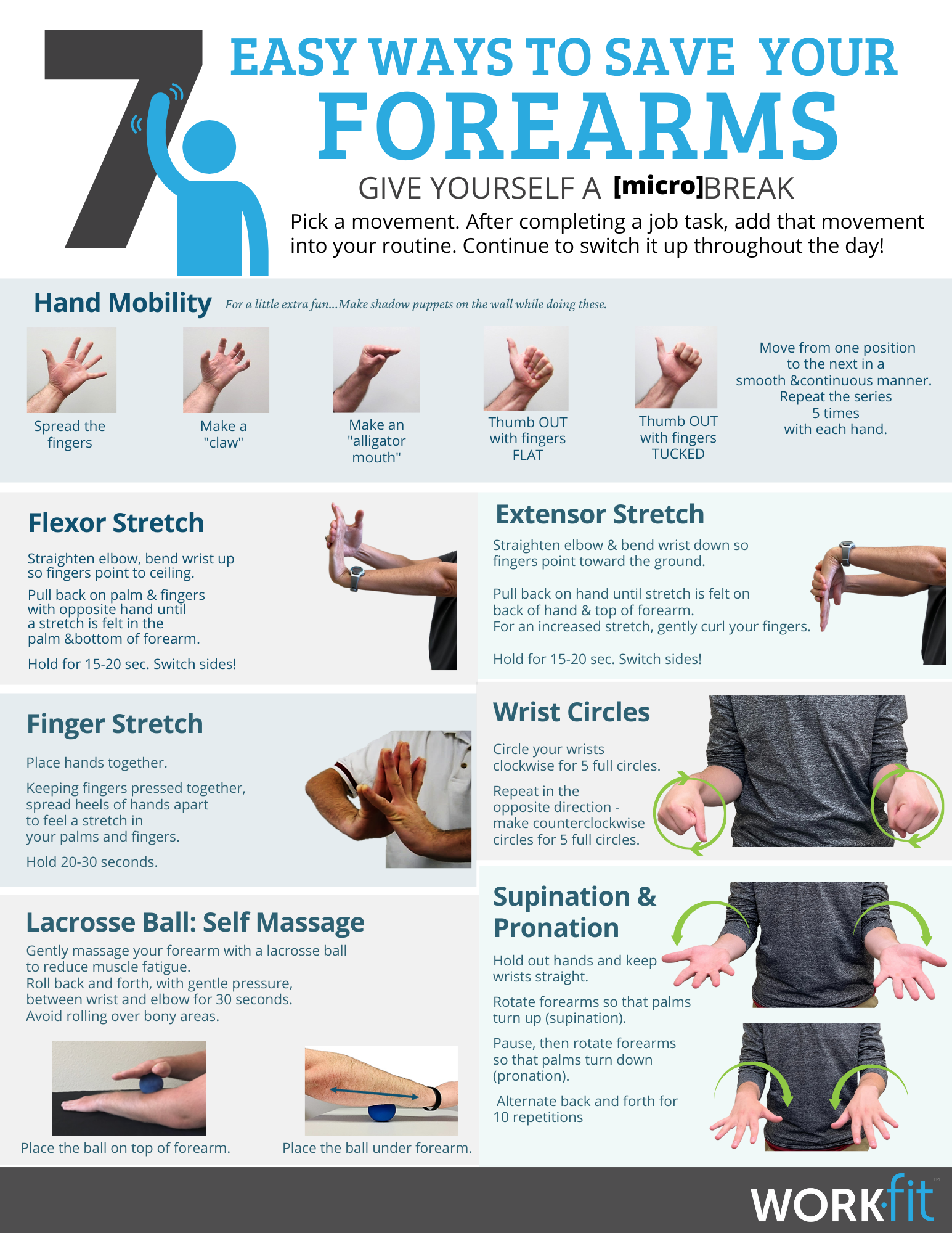7 Easy Ways to Prevent Tennis Elbow

It’s not just tennis or pickleball players who suffer from elbow pain—anyone who handles repetitive, load-bearing tasks with their arms can be at risk. Lateral epicondylitis, the medical term for tennis elbow, affects hundreds of workers in factories and warehouses every year.
Keep a neutral wrist position while working
One of the best ways to avoid forearm, elbow, and wrist injuries while on the job is being aware of your wrist position. In a lot of jobs, what feels “natural” is extending or flexing the wrist to better handle a load or maneuver tools, including a computer mouse.
Over time, however, positions that bend the wrist one way or the other can stress the tendons and nerves that pass through the wrist, leading to carpal tunnel syndrome or even elbow pain.
A neutral wrist position is one where you maintain a straight line from the fingertips, through the wrist, to the elbow. Think of it like a “handshake” position. Lifting loads from the bottom or with your hands on either side helps keep your wrists straight and distributes the load into the larger muscles of your arm. Avoid gripping objects from the top as much as possible.

Use forearm stretches
Manual labor or even desk work often requires your forearms to stay in one position for multiple tasks or long periods of time. Incorporating a few stretches into your workflow can help prevent muscle tension, soreness, and injuries from developing.
1. Flexor stretch
Flex the muscles in the “bottom” of your forearm by straightening your elbow and bending the wrist so your fingers point upward. Hold this stretch for 15-20 seconds and repeat on your other arm.
2. Extensor stretch
Stretch the “top” of your forearm by straightening your elbow and bending your wrist so your fingers point toward the ground. Again, hold for 15-20 seconds per arm.
Both the flexor and extensor stretch can be deepened by pulling back harder or by curling your fingers into the stretch.
3. Finger stretch
Stretch the tendons in your forearm and fingers by placing your hands together in front of your chest. Keeping your fingers touching, spread the heels of your palms apart until you feel a stretch in your fingers and the bottom of your forearm.
Take microbreaks from gripping and lifting
Soreness, stiffness, and repetitive stress injuries occur when the muscles in your forearm and surrounding your elbow joint are constantly working without rest. The micro tears that can form during long tasks can create symptoms that make it harder to work.
Taking breaks can help your muscle tissue and joints rest and recover in short but meaningful ways during the workday. Here are a few things you can do to keep these areas mobile and flexible when taking a short break.
4. Self-massage
Rolling a lacrosse or tennis ball over your forearm muscles is a satisfying way to ease muscle tension quickly. Simply place the ball on a table or the top of your arm and roll it around with gentle pressure to relieve tension that may be building up.
5. Hand mobility breaks
Stretching and flexing your hand and fingers can help relieve tension throughout the forearm and even up to the elbow. Follow our hand mobility positions to give your grip a break during a micro-break.
Tennis elbow exercises
Finally, there are a few therapeutic exercises our Work-Fit industrial trainers utilize to help prevent lateral epicondylitis in many workplace environments.
6. Wrist circles
Resting your elbows against your torso at a 90-degree angle, circle your wrists 5 times in both directions.
7. Supination and pronation
In the same position, or with your elbows away from your body and relaxed, hold your hands out straight in front of you. Turn them palms-up, then slowly rotate your forearms to turn them palms-down. Repeat 10 times.
Injury prevention care with on-site trainers
These 7 ideas are just a few ways to get started with injury prevention techniques that may or may not be practical in your situation. That’s why the best strategy to prevent injuries like lateral epicondylitis is with hands-on expertise that understands your workplace in and out.
Our teams of athletic training professionals have the experience and adaptability to help any workplace lower their workers’ risk of injury, saving time loss and maximizing productivity for teams in any industry. Learn more about how we might help your team stay healthy and functional by starting a conversation with us today.



